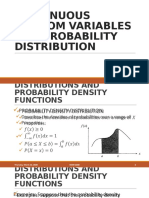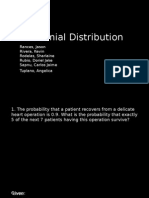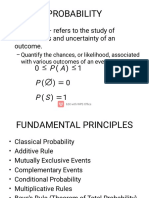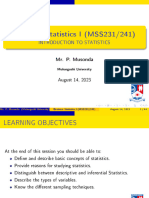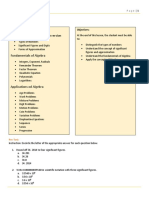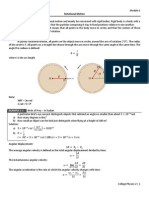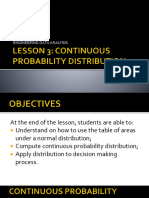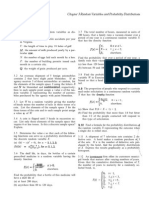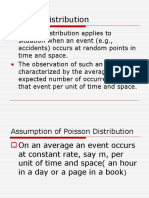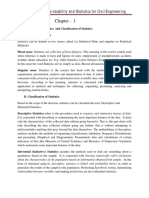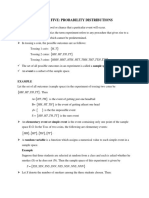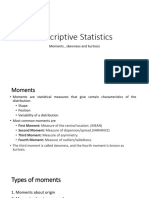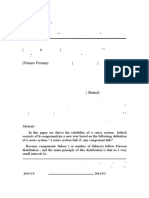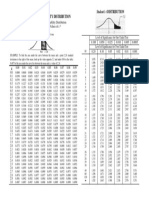0% found this document useful (0 votes)
334 views14 pagesProbability Distributions Guide
The document discusses several continuous probability distributions:
- The uniform distribution has a probability density function that is constant between specified lower and upper bounds. The mean is the average of these bounds.
- The exponential distribution models time between events and has a probability density function involving an exponential term. Its mean and variance are determined by its parameter λ.
- The normal distribution is widely used and its properties include the empirical rule that about 68%, 95%, and 99.7% of the area under the curve lies within 1, 2, and 3 standard deviations of the mean.
Uploaded by
Muzahidul IslamCopyright
© © All Rights Reserved
We take content rights seriously. If you suspect this is your content, claim it here.
Available Formats
Download as PDF, TXT or read online on Scribd
0% found this document useful (0 votes)
334 views14 pagesProbability Distributions Guide
The document discusses several continuous probability distributions:
- The uniform distribution has a probability density function that is constant between specified lower and upper bounds. The mean is the average of these bounds.
- The exponential distribution models time between events and has a probability density function involving an exponential term. Its mean and variance are determined by its parameter λ.
- The normal distribution is widely used and its properties include the empirical rule that about 68%, 95%, and 99.7% of the area under the curve lies within 1, 2, and 3 standard deviations of the mean.
Uploaded by
Muzahidul IslamCopyright
© © All Rights Reserved
We take content rights seriously. If you suspect this is your content, claim it here.
Available Formats
Download as PDF, TXT or read online on Scribd
/ 14








